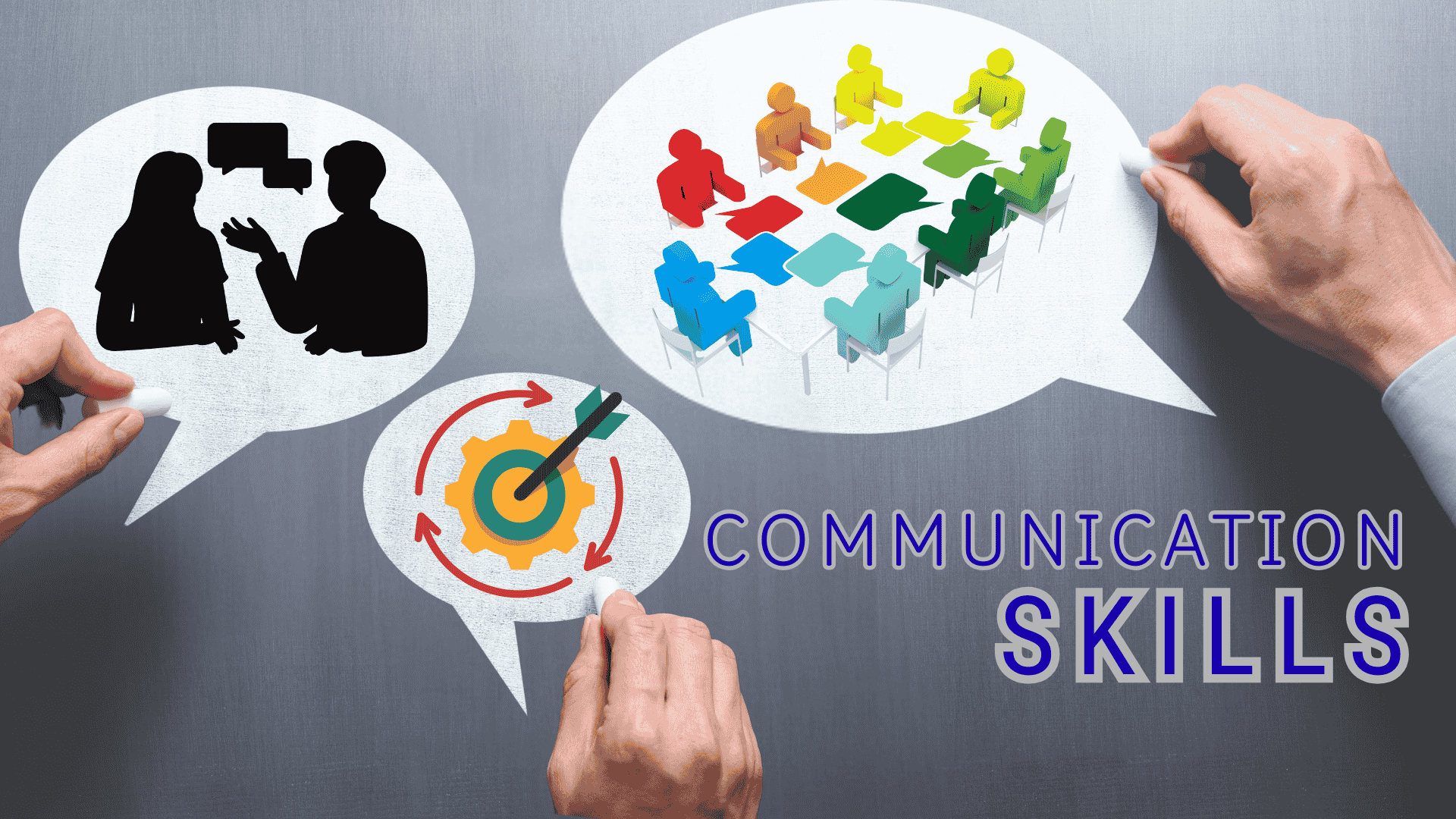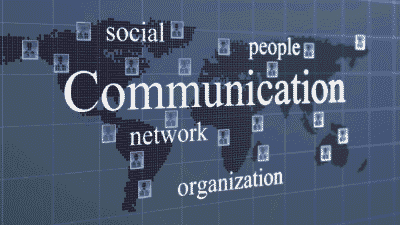A critical project fails. Deadlines are missed, resources are wasted, and team morale plummets. The post-mortem analysis reveals a surprising culprit: it wasn’t a lack of technical expertise, funding, or effort. It was a single, poorly worded email chain that created a cascade of misunderstandings. This scenario is not fiction; it’s a daily reality in organizations where effective communication skills are undervalued. For the advanced leader, mastering these skills is not just a ‘soft’ addition to your toolkit; it is the very foundation upon which successful teams, innovative projects, and a thriving organizational culture are built. This guide moves beyond the basics to offer you a blueprint for embedding powerful communication into your leadership DNA.
1. Beyond the Transmission of Words: What Are Effective Communication skills?
Many leaders mistake communication for the mere act of speaking or writing. However, true communication is about the successful transfer of meaning and intent. It’s the difference between telling your team what to do and ensuring they understand why they are doing it, feeling motivated and aligned with the objective.
1.1 The Shift from Monologue to Dialogue
At its core, leadership communication is not a monologue from the top down. It is a structured dialogue. To achieve this, you must master four interconnected pillars that define advanced, effective communication skills.
- Pillar 1: Absolute Clarity: This is the bedrock. Clarity isn’t just about using simple words; it’s about structuring your message so that there is only one possible interpretation. It removes ambiguity and prevents the costly errors that arise from guesswork.
- Pillar 2: Strategic Empathy: This is the ability to understand your audience’s perspective, knowledge level, and potential concerns before you communicate. It’s about tailoring your message, tone, and medium to resonate with the recipient, ensuring they are receptive to your point.
- Pillar 3: Active Listening: This is arguably the most neglected leadership skill. It’s not just waiting for your turn to speak. It’s a disciplined process of fully concentrating, understanding, responding to, and then remembering what is being said. It uncovers hidden issues and builds immense trust.
- Pillar 4: Constructive Feedback Loops: Effective communication is not a one-time event. It is a continuous loop. This means creating and maintaining formal and informal channels for giving and receiving feedback, ensuring that the lines of communication are always open, honest, and productive.
2. The Strategic Imperative: Why Mastering Effective Communication Skills is Non-Negotiable
Investing time in honing effective communication skills yields tangible returns that directly impact the bottom line and long-term health of your organization. It is a strategic function, not an operational afterthought.
2.1 From Confusion to Cohesion: Amplifying Team Productivity
Vague instructions are productivity killers. Consider a manager, Mr. Adnan, who tells his team, “I need the quarterly report done as soon as possible.” Each team member interprets this differently. One rushes a sloppy draft in two hours. Another plans to spend two weeks on a comprehensive analysis. The result is wasted effort and frustration.
Now, imagine Mr. Adnan applies clarity: “I need the Q3 sales performance report, focusing specifically on new client acquisition data. Please submit a first draft to me by 3 PM on Thursday for review. The final version is due to the board on Monday. The goal is to highlight our top three growth areas.”
The second instruction provides the What, the Why (for the board), the Specifics (new client acquisition), and the When (clear deadlines). This is how communication transforms chaos into coordinated action. A study by McKinsey found that well-connected teams see a productivity increase of 20-25%.
2.2 Building Unshakeable Trust, One Conversation at a Time
Trust is the currency of leadership. It is earned through consistent, transparent, and empathetic communication. When leaders communicate openly about challenges, admit when they don’t have all the answers, and listen to concerns without judgment, they create an environment of psychological safety. In such an environment, team members are more likely to propose innovative ideas, report problems early, and give discretionary effort. Conversely, poor communication—like sharing information with only a select few or delivering news without context—erodes trust almost instantly.
2.3 Navigating Conflict with Skill and Confidence
Workplace disagreements are inevitable. Poor communication turns them into destructive conflicts, while effective communication skills transform them into opportunities for growth.
Let’s look at a real-life example. Two senior engineers, Karim and Zayn, are in a deadlock over the technical approach for a new product. Tensions are high, and the project has stalled. Their manager, Mr. Harith, steps in.
- Poor Communication Approach: Mr. Harith calls them both into his office and declares, “We are going with Zayn’s approach. Let’s move on.” This invalidates Karim’s expertise, creates resentment, and solves nothing long-term.
- Effective Communication Approach: Mr. Harith meets with each engineer separately first, using active listening to understand their perspectives fully. Then, he brings them together. He starts by establishing a shared goal: “We both agree that our primary objective is to build the most reliable and efficient product for our clients.” He then facilitates a structured discussion, asking clarifying questions and ensuring each man listens to the other’s technical reasoning without interruption. He helps them find a hybrid solution that incorporates the strengths of both their ideas.
The result? The conflict is resolved, the final product is stronger, and the professional respect between Karim and Zayn is restored.
3. How to Develop and Apply Effective Communication Skills: A Practical Guide
Theory is simple; application is what separates great leaders from average ones. Here are actionable methods to elevate your communication.
3.1 The Art of Active Listening: Are You Truly Hearing or Just Waiting to Talk?
To become an active listener, you must deliberately fight the urge to formulate your response while the other person is speaking. Here’s how:
- Practice the 3-Second Pause: After someone finishes speaking, mentally count to three before you respond. This ensures they have truly finished their thought and gives you a moment to process, not just react.
- Paraphrase for Clarity: Start your response with phrases like, “So, if I’m understanding correctly, you’re saying that…” or “It sounds like your main concern is…” This confirms your understanding and makes the speaker feel heard.
- Ask Open-Ended Questions: Instead of “Did you finish the task?” (a yes/no question), ask “What progress have you made on the task, and what challenges are you facing?” This invites a detailed response rather than a simple confirmation.
3.2 Crafting Messages with Precision: The P.A.C.T. Framework
Before you write an important email or prepare for a meeting, use the P.A.C.T. framework to structure your thoughts for maximum clarity.
- P – Purpose: What is the single most important thing I want my audience to know or do after receiving this message? If you can’t state it in one sentence, your message is not yet clear.
- A – Audience: Who am I communicating with? What is their current knowledge of this topic? What are their priorities and potential concerns?
- C – Context: What is the background information needed for this message to make sense? What has happened before this communication?
- T – Tone: What is the appropriate tone for this message? Is it formal, instructional, motivational, or urgent? The tone should match the purpose and the audience.
Visual Element Suggestion: P.A.C.T. Framework Flowchart
A simple flowchart could illustrate this:
(Start) -> [Define Purpose] -> [Analyze Audience] -> [Provide Context] -> [Select Tone] -> (Deliver Message)
3.3 Giving Feedback That Builds, Not Breaks
Feedback is a powerful tool for growth, but delivered poorly, it can demotivate and damage relationships. Avoid vague comments like “Good job” or “You need to be more proactive.” Instead, use a structured model.
- Describe the Specific Situation: Anchor the feedback in a specific time and place.
- Example: “During yesterday morning’s team presentation…”
- Outline the Observable Behavior: Describe what you saw or heard—the facts, without judgment or interpretation.
- Example: “…you presented the data clearly, but you didn’t leave time for questions at the end.”
- Explain the Impact: Explain the consequence of the behavior, linking it to team, project, or company goals.
- Example: “…The impact was that the new team members seemed confused about the next steps, and we had to schedule a follow-up meeting, which delayed the timeline.”
This model removes personal opinion and focuses on actionable, objective observations, making it far easier for the recipient to accept and act upon.
3.4 Mastering Non-Verbal Communication
A significant portion of communication is non-verbal. For a leader, this means projecting confidence and approachability through professional conduct.
- Vocal Tone and Pace: Your tone of voice carries immense weight. A steady, calm tone conveys authority and stability, especially during a crisis. Speaking too quickly can signal nervousness, while speaking too slowly might be perceived as patronizing. Practice modulating your voice to match your message.
- Professional Posture: Maintaining an upright and composed posture during meetings conveys confidence and engagement. It signals that you are present and attentive to the discussion.
- Use of Space: Be mindful of professional boundaries. Maintaining a respectful distance in interactions fosters a comfortable and formal environment conducive to professional discourse.
4. Common Myths About Effective Communication Skills Debunked
Advancing your leadership requires unlearning common misconceptions that hold many leaders back.
4.1 Myth 1: “More Communication is Always Better.”
Reality: The goal is not more communication, but better communication. Over-communicating—drowning your team in endless emails, meetings, and status updates—leads to information overload and diminishes the impact of truly important messages. The effective leader is a master of concise, relevant, and timely communication.
4.2 Myth 2: “If I’m the Leader, the Responsibility to Understand is on Them.”
Reality: The burden of clarity always lies with the communicator. If your team misunderstands your instructions, the first question to ask is not “Why didn’t they get it?” but “How could I have communicated that more clearly?” Taking ownership of your communication is a hallmark of great leadership.
4.3 Myth 3: “Communication is a ‘Soft Skill’ and Less Important Than Technical Abilities.”
Reality: This is perhaps the most dangerous myth. An individual with brilliant technical skills but poor communication can become a bottleneck, a source of conflict, and a drain on team morale. In leadership, effective communication skills are the “hardest” skill of all; they are the multiplier that unlocks the full potential of every other technical skill on your team. Gallup research has consistently shown that managers who communicate effectively are a primary driver of employee engagement and performance.
Visual Element Suggestion: Table Comparing Poor vs. Effective Feedback
| Aspect | Poor Feedback Example | Effective Feedback Example (using the model) |
| Specificity | “You need to manage your time better.” | “In the project planning meeting on Tuesday, you committed to three major tasks, but the first one was delivered a day late.” |
| Focus | “You’re not being a team player.” | “When you worked on the code independently without checking in, it meant the testing team couldn’t start their work on time.” |
| Outcome | Leaves the person feeling confused and defensive. | “The impact was a 24-hour delay in the project schedule. In the future, could we agree on a mid-point check-in for tasks like this?” |
Conclusion
Revisiting our opening story, the failed project was not a technical failure but a human one—a failure of communication. Effective communication skills are not an innate talent but a discipline that requires conscious practice and refinement. For the leader aiming for excellence, they are the essential tool for transforming strategy into action, conflict into collaboration, and potential into performance. By moving from monologue to dialogue, mastering clarity and empathy, and building robust feedback loops, you are not just sending better messages—you are building a better, more resilient, and more successful organization.
Frequently Asked Questions (FAQ)
1. What is the single most important first step to improving my effective communication skills as a leader?
The first and most impactful step is to master active listening. Before you try to improve how you send messages, focus on truly understanding the messages you receive. This single shift builds trust and provides you with the crucial information needed to communicate more effectively later.
2. How can I deliver negative feedback without demotivating my team member?
Use the Situation-Behavior-Impact model. By focusing on objective, observable facts and their tangible consequences rather than on personal opinions or character judgments, you make the feedback about the work, not the person. Always deliver it privately and with the clear intention of helping the person grow.
3. In a remote or hybrid work environment, what communication skill is most critical?
In a remote setting, clarity in written communication becomes paramount. Since you lose the immediate feedback of non-verbal cues, your emails, project briefs, and chat messages must be exceptionally clear, concise, and unambiguous. Over-communicate context and expectations in writing.
4. How can I measure the effectiveness of my team’s communication?
Measure it by its outcomes. Look for tangible indicators:
- A decrease in errors or rework caused by misunderstandings.
- Faster project completion times.
- An increase in proactive problem-solving from team members.
- Higher employee engagement and lower turnover rates.
- Fewer and shorter meetings needed to achieve alignment.
5. Is it ever okay to over-communicate?
During times of significant change or crisis, it is better to err on the side of more frequent, transparent communication. In these situations, employees need reassurance and clarity. However, this should be the exception, not the rule. The goal is to be strategic, providing the right information at the right time.
references
Warning: The provided links lead only to the specified content. Other areas of those sites may contain material that conflicts with some beliefs or ethics. Please view only the intended page. Note: The source links are available in English only.
- Pumble Feb 11, 2025 Author: (no specific author listed)Workplace Communication Statistics (2025).
Shows McKinsey finding: well-connected teams increase productivity by ~20-25%. :contentReference[oaicite:0]{index=0} - McKinsey & Company Oct 31, 2024 Author: McKinsey Research TeamCracking the code of team effectiveness.
Details behaviors (like communication, trust, feedback) that distinguish high- vs low-performing teams. :contentReference[oaicite:1]{index=1} - Gallup Jan 19, 2024 Author: Denise McLain & Bailey NelsonHow Effective Feedback Fuels Performance.
Shows employees getting meaningful feedback weekly are much more engaged. :contentReference[oaicite:2]{index=2} - Gallup May 29, 2023 Author: Gallup Research TeamA Great Manager’s Most Important Habit.
Managers who hold weekly meaningful conversations produce higher engagement, lower turnover, and better performance. :contentReference[oaicite:3]{index=3} - Forbes May 20, 2024 Author: Forbes Coaches CouncilMastering the Art of Effective Communication, Building Productivity and Collaboration.
Reinforces how team communication alignment and connection boost productivity (up to ~25%). :contentReference[oaicite:4]{index=4}







